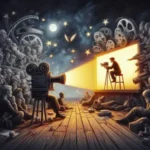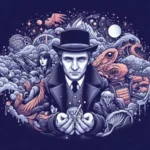In a world where fleeting trends come and go, classic films stand as timeless pillars of cultural expression, shaping our values, perspectives, and choices in profound ways.
From the heartwarming narratives that tug at our emotions to the thought-provoking stories that challenge societal norms, these cinematic treasures have woven themselves into the fabric of our everyday lives. They not only entertain but also serve as mirrors reflecting the complexities of human experience, prompting us to question our beliefs and aspirations. In this blog post, we will explore the lasting legacy of classic films, delving into their influence on contemporary culture, the way they inspire creative endeavors, and how their enduring themes continue to resonate across generations. Join us as we uncover the powerful impact of these cinematic masterpieces and their ability to shape our identities and choices in an ever-evolving world.
1. Introduction: The Power of Classic Films in Culture
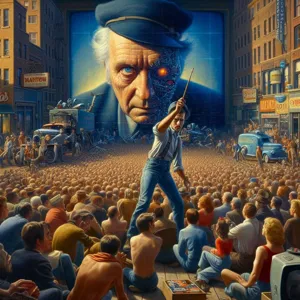
In an age of rapid technological advancement and a seemingly endless stream of new content, classic films stand as timeless pillars of culture, shaping not only our entertainment choices but also our values, beliefs, and societal norms. From the smoky jazz clubs of the 1920s portrayed in *The Great Gatsby* to the gripping courtroom drama of *To Kill a Mockingbird*, these films serve as windows into the past, reflecting the complexities of human experiences and the cultural zeitgeist of their times.
Classic films possess a unique power; they can evoke nostalgia, inspire movements, and even ignite conversations that transcend generations. A single line of dialogue or an iconic scene can resonate deeply, influencing the way we perceive love, justice, friendship, and conflict. They introduce us to unforgettable characters who challenge our perspectives and encourage us to question our place in the world.
Moreover, the influence of classic cinema extends far beyond the screen. They have shaped fashion trends, set the tone for music genres, and inspired countless contemporary filmmakers and artists. A character’s choice of attire or a particular soundtrack can permeate our culture, echoing through the decades and leaving an indelible mark on our collective consciousness.
As we dive into the enduring legacy of classic films, we will explore how these cinematic masterpieces continue to inform our choices, foster connections, and challenge societal norms, ultimately weaving a rich tapestry that binds us together across time and space. Join us on this journey into the world of classic cinema, where the past informs the present and shapes the future.
2. Defining Classic Films: What Makes Them Timeless?
Defining classic films is no simple task, as the essence of what makes a film “timeless” often transcends mere nostalgia. A classic film is not solely characterized by its age or box office success; rather, it embodies a unique blend of storytelling, artistry, and cultural impact that resonates across generations. These films often explore universal themes—love, loss, conflict, and the human condition—making them relatable regardless of the era in which one views them.
In addition to compelling narratives, classic films are marked by their distinctive visual styles and groundbreaking techniques. Whether it’s the chiaroscuro lighting of film noir or the sweeping cinematography of epic dramas, these films have a signature aesthetic that continues to influence filmmakers today. Iconic performances by legendary actors also play a crucial role; their portrayals often become benchmarks for talent, setting standards that aspiring actors strive to achieve.
Moreover, classic films contribute to shaping societal norms and dialogues. They reflect the cultural zeitgeist of their time, often addressing pressing social issues or embodying the prevailing attitudes and beliefs of their era. Films like “To Kill a Mockingbird” challenge societal injustices, while “Casablanca” captures the moral complexities of war and love. The conversations sparked by such films endure long after the credits roll, influencing public opinion and inspiring movements.
In essence, what makes a film timeless is its ability to evoke emotions, provoke thought, and foster connections. Classic films are more than just entertainment; they are cultural touchstones that invite viewers to reflect on their lives and the world around them, ensuring their legacy endures for years to come.
3. Historical Context: The Evolution of Cinema and Its Impact
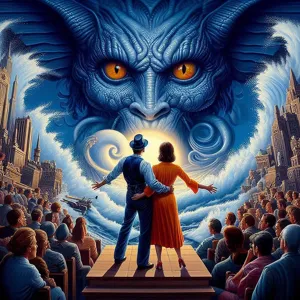
Cinema has always been a mirror reflecting the society from which it emerges, capturing the zeitgeist of its time and influencing the cultural fabric in profound ways. To fully appreciate the lasting legacy of classic films, it’s essential to delve into the historical context surrounding their creation and the evolution of the medium itself.
The journey of cinema began in the late 19th century with silent films, where visual storytelling first captivated audiences around the world. Early pioneers like the Lumière brothers and Georges Méliès laid the groundwork for a nascent art form that would soon explode into a global phenomenon. As the years progressed, the introduction of sound in the late 1920s revolutionized filmmaking, allowing for richer storytelling and more nuanced character development. This technological evolution not only attracted more viewers but also expanded the narrative possibilities for filmmakers.
Throughout the decades, classic films have mirrored the societal changes and challenges of their respective eras. The post-World War II period, for instance, was characterized by films that explored the complexities of human experience in the face of trauma and rebuilding. Movies like “Casablanca” and “It’s a Wonderful Life” resonated with audiences seeking solace and hope, ultimately shaping public sentiment and cultural identity during a time of uncertainty.
Moreover, the civil rights movements of the 1960s and 70s ignited a wave of films that addressed social justice and equality, compelling audiences to confront uncomfortable truths. Movies such as “Guess Who’s Coming to Dinner?” and “The Graduate” not only entertained but sparked conversations about race, class, and generational divides, leaving an indelible mark on society’s collective consciousness.
As we entered the age of blockbuster cinema in the late 20th century, films like “Star Wars” and “Jurassic Park” transcended mere entertainment, becoming cultural phenomena that influenced fashion, music, and even language. These films shaped not just what audiences wanted to see, but also how they perceived themselves and their place in the world.
Today, as we reflect on the legacy of classic films, it’s clear that their impact extends far beyond the screen. They have the power to shape our values, challenge our perspectives, and inspire future generations. By understanding the historical context in which these films were created, we can better appreciate their role in shaping our culture and choices, reminding us that cinema is not just an art form, but a powerful agent of change.
4. Iconic Characters: How Classic Films Influence Our Archetypes
Iconic characters in classic films serve as powerful archetypes that resonate deeply within our collective consciousness, shaping not only our cultural narratives but also our personal choices and identities. From the dashing hero to the cunning villain, these larger-than-life figures embody traits and ideals that transcend the confines of their stories, leaving an indelible mark on society.
Take, for instance, the quintessential hero, embodied by characters like Indiana Jones or Atticus Finch. These figures represent bravery, moral integrity, and the relentless pursuit of justice. They inspire us to strive for these qualities in our own lives, whether it’s standing up for what is right, embarking on adventures, or simply challenging the status quo. The lessons we glean from their journeys often encourage us to take risks, embrace our passions, and fight for the greater good.
Conversely, iconic villains like Darth Vader or Norman Bates tap into our fears and insecurities, providing a lens through which we can explore the darker aspects of human nature. Their complexities often force us to confront uncomfortable truths about ourselves and society, prompting reflection on the choices we make and the paths we choose. By embodying traits we may not wish to acknowledge, these characters challenge us to examine our own values and motivations, ultimately influencing our decisions in profound ways.
Moreover, classic films often create archetypes that reflect societal norms and expectations. Characters like Holly Golightly from “Breakfast at Tiffany’s” or Rick Blaine from “Casablanca” encapsulate the nuances of romance, ambition, and existential longing, shaping our understanding of love and desire. As we engage with these characters, we often find ourselves questioning and redefining our own relationships, aspirations, and life choices.
In essence, the iconic characters of classic films are more than just figments of cinematic imagination; they are cultural touchstones that guide our understanding of ourselves and the world around us. By influencing our archetypes, they not only entertain but also educate and inspire, leaving a lasting legacy that continues to shape our culture and choices for generations to come.
5. Themes and Messages: Lessons from Classic Cinema
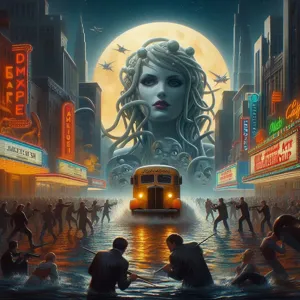
Classic films are more than just entertainment; they are a treasure trove of themes and messages that resonate deeply within our society. These timeless narratives often tackle universal human experiences—love, loss, ambition, and morality—displaying a remarkable ability to reflect the complexities of the human condition. From the poignant struggles of characters in films like *Casablanca* to the moral dilemmas faced in *To Kill a Mockingbird*, these stories offer profound lessons that continue to shape our cultural landscape.
Take, for instance, the theme of resilience found in *It’s a Wonderful Life*. This cherished film illustrates the importance of community, the impact of individual choices, and the value of life’s simple pleasures. Through the trials faced by George Bailey, audiences are reminded of the significance of human connections and the often unseen ripple effects of our actions. Such themes are not confined to the screen; they seep into our day-to-day lives, encouraging us to reflect on our own choices and the values we uphold.
Moreover, classic films often challenge societal norms and provoke critical conversations. *12 Angry Men* serves as a powerful commentary on justice and prejudice, pushing viewers to examine their biases and the ethical implications of their decisions. By engaging with these narratives, we cultivate a deeper understanding of the world around us, driving conversations that can lead to meaningful change.
As we revisit these cinematic masterpieces, we find that their themes and messages transcend time, continually influencing our choices, values, and societal structures. They serve as a reminder of the power of storytelling to educate, inspire, and unite us, making classic cinema an enduring pillar of our cultural heritage.
6. The Role of Classic Films in Social Movements
Classic films have an unparalleled ability to reflect and shape societal values, serving as both mirrors and catalysts for social movements throughout history. From the poignant storytelling of the Civil Rights Movement in films like *Guess Who’s Coming to Dinner* to the feminist undertones in *Thelma & Louise*, these cinematic masterpieces have often captured the zeitgeist of their respective eras, sparking conversations and inspiring action.
Take, for instance, *12 Angry Men*, a film that delves into the intricacies of the American judicial system while highlighting issues of prejudice and moral responsibility. Its portrayal of one juror’s fight against societal norms resonates deeply with the ongoing struggles for justice and equality, reminding viewers of the power of individual conviction. Similarly, *To Kill a Mockingbird*, with its exploration of racial injustice, not only provides a poignant narrative but also encourages audiences to confront uncomfortable truths about their own societal roles.
The influence of these films extends beyond mere entertainment; they have the power to mobilize individuals, instill a sense of solidarity, and provoke critical thought. For many, classic films become touchstones that frame their understanding of complex social issues. As viewers resonate with the characters and their struggles, they are often inspired to reflect on their own beliefs and actions, leading to a greater engagement with social causes.
Moreover, classic films often serve as educational tools, entering discussions in classrooms, activism, and public forums. They provide accessible entry points for audiences to grapple with difficult topics, fostering dialogue and understanding across generations. Whether it’s through a screening at a community center or a discussion panel at a film festival, these cinematic treasures have the ability to ignite passion and drive change within society.
In this way, classic films are more than just relics of the past; they are vital pieces of cultural heritage that continue to influence our choices and perspectives today. By examining the role of these films in social movements, we gain insight into how art can inspire action and transform lives, reminding us that the stories we tell can indeed change the world.
7. Nostalgia and Memory: The Emotional Connection to Classic Films
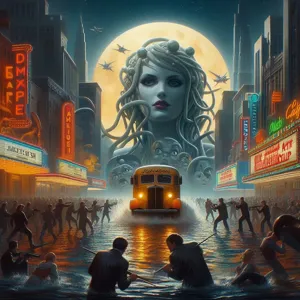
Nostalgia and memory play a profound role in our emotional connection to classic films, intertwining our personal histories with the cinematic narratives that have shaped our cultural landscape. These films often serve as time capsules, evoking bittersweet reminiscences of our past, transporting us back to moments that are steeped in emotion. Whether it’s the heartwarming scenes from “It’s a Wonderful Life” that remind us of family gatherings during the holidays, or the thrilling escapades of “The Wizard of Oz” that encapsulate the wonder of childhood, classic films serve as a backdrop for our formative experiences.
As we revisit these beloved movies, we find comfort in their familiar plots, memorable characters, and iconic soundtracks. They evoke a sense of belonging, tapping into collective memories shared across generations. The emotional weight of these films can provoke laughter, tears, or even a sense of longing, as they remind us of the values, dreams, and struggles that resonate deeply within us.
Moreover, these classic films often become cultural touchstones, referenced in conversations, parodied in modern media, or quoted in everyday life. This continual presence reinforces their significance in our lives, shaping our perspectives and influencing our choices. By evoking nostalgia, classic films remind us not only of who we were but also of who we aspire to be, creating a lasting legacy that transcends time and continues to mold our culture. The emotional connection we forge with these films is a powerful testament to their enduring impact, illustrating how they become woven into the very fabric of our identities.
8. How Classic Films Shape Modern Storytelling and Filmmaking
Classic films are the cornerstone of modern storytelling and filmmaking, serving as both inspiration and foundation for countless contemporary works. These cinematic masterpieces, created during the golden ages of film, have transcended time and continue to resonate with audiences today. From their groundbreaking narratives to innovative techniques, classic films have left an indelible mark on the art of storytelling.
One of the most profound ways classic films shape modern storytelling is through their archetypal characters and timeless themes. Take, for example, the moral dilemmas faced by characters in films like “Casablanca” or “To Kill a Mockingbird.” These narratives explore fundamental human experiences such as love, sacrifice, and justice, laying the groundwork for characters in today’s films who grapple with similar issues. Filmmakers often draw upon these archetypes and themes, infusing their own narratives with a sense of familiarity and depth that resonates with audiences on a fundamental level.
Moreover, classic films have pioneered various filmmaking techniques that remain relevant in contemporary cinema. The use of lighting, camera angles, and editing styles introduced by directors like Alfred Hitchcock and Orson Welles has influenced generations of filmmakers. For instance, Welles’ innovative use of deep focus in “Citizen Kane” allows viewers to experience layered storytelling within a single frame, a technique that continues to be utilized in modern cinematography. These technical advancements not only enhance the visual experience but also deepen the narrative layers, challenging filmmakers to push creative boundaries.
Additionally, the cultural impact of classic films cannot be understated. They often reflect the societal values and issues of their time, providing a lens through which we can examine our own culture. As modern filmmakers grapple with pressing issues such as identity, equality, and environmental concerns, they often find themselves referencing classic films to draw parallels or critique societal norms. This dialogue between the old and the new enriches the narrative landscape, encouraging audiences to engage with both the history of film and the contemporary issues that shape our world.
In essence, classic films are not merely relics of the past; they are living texts that continue to inform and inspire modern storytelling and filmmaking. As we celebrate the legacy of these cinematic wonders, we recognize their power to shape our cultural narratives, challenge our perceptions, and ultimately, guide our choices in an ever-evolving landscape.
9. The Influence of Classic Films on Fashion and Trends
Classic films have long served as cultural touchstones, shaping not only our storytelling but also our fashion and lifestyle choices. From the glamorous gowns of Hollywood’s Golden Age to the iconic accessories that defined entire decades, these cinematic masterpieces have left an indelible mark on the fashion landscape. For instance, consider the timeless elegance of Audrey Hepburn in “Breakfast at Tiffany’s.” Her little black dress, paired with pearls and a chic updo, transcended the film itself, spawning a wave of fashion that continues to influence designers and style enthusiasts today.
Similarly, James Dean’s rebellious denim jacket and white t-shirt in “Rebel Without a Cause” have become synonymous with youthful defiance and laid-back cool, inspiring generations of fashion-forward individuals to embrace that effortlessly stylish aesthetic. These films do more than just showcase clothing; they encapsulate attitudes and lifestyles that resonate with viewers, making them aspirational figures in the world of fashion.
As trends come and go, the impact of classic films endures. Designers frequently draw upon this rich reservoir of cinematic inspiration, revisiting past styles and reinterpreting them for modern audiences. The resurgence of high-waisted trousers, vintage prints, and retro silhouettes in today’s fashion scene can often be traced back to the iconic looks first popularized by classic film stars.
Moreover, classic films also serve as a mirror reflecting the societal values and trends of their time. They can reveal how certain styles were not just fashion choices but statements of identity, politics, and cultural movements. The sartorial choices of characters often encapsulate the zeitgeist, making them relevant and relatable across generations.
In this way, classic films do more than entertain; they inform our choices, inspire our wardrobes, and ultimately shape the cultural fabric of society. By revisiting these cinematic treasures, we can better understand not only the evolution of fashion but also the broader narratives that continue to influence our lives today.
10. Case Studies: Classic Films That Changed Cultural Perspectives
### Case Studies: Classic Films That Changed Cultural Perspectives
Classic films have long served as mirrors reflecting society’s values, struggles, and aspirations, but a select few have transcended their cinematic origins to become catalysts for cultural change. Examining these films reveals how they not only entertained but also reshaped cultural perspectives and influenced societal norms.
Take **”To Kill a Mockingbird”** (1962), for instance. Based on Harper Lee’s Pulitzer Prize-winning novel, this film confronted the deeply entrenched issues of racism and injustice in America. Through the eyes of young Scout Finch, audiences were introduced to the moral complexities of empathy and integrity, embodied by the character of Atticus Finch, who stood up against racial prejudice in a Southern town. The film sparked crucial conversations about civil rights, encouraging viewers to challenge the status quo and advocate for social justice—a legacy that reverberates through educational curriculums and activism today.
Similarly, **”The Graduate”** (1967) offered a poignant critique of post-war American society and the disillusionment of the younger generation. With its iconic line, “Mrs. Robinson, you’re trying to seduce me,” the film exposed the emptiness of traditional values and the struggles of young adults grappling with societal expectations. It ignited discussions around personal freedom, sexual liberation, and the quest for identity—issues that continue to resonate in contemporary culture.
Another transformative film, **”Psycho”** (1960), directed by Alfred Hitchcock, redefined the horror genre and challenged viewers’ perceptions of morality and sanity. Its innovative narrative structure and shocking plot twists not only revolutionized filmmaking but also instigated a cultural fascination with psychological thrillers. “Psycho” prompted audiences to reconsider their notions of safety and trust, leaving a lasting imprint on the horror genre and influencing countless filmmakers.
These examples highlight how classic films serve as powerful vehicles for social change. By presenting complex characters and thought-provoking narratives, they encourage audiences to reflect on their beliefs and values, ultimately shaping cultural perspectives for generations to come. As we revisit these cinematic masterpieces, we are reminded of their profound impact—not just as entertainment, but as pivotal moments in the ongoing dialogue about identity, justice, and the human experience.
11. The Impact of Classic Films on Generational Values
Classic films have an undeniable power to shape and influence the values and beliefs of generations. These cinematic masterpieces, often created in a different era, encapsulate the zeitgeist of their time while simultaneously offering timeless themes that resonate across decades. From the moral dilemmas faced by characters in films like *To Kill a Mockingbird* to the revolutionary spirit portrayed in *Rebel Without a Cause*, these narratives not only reflect the societal norms of their day but also challenge audiences to reconsider their own values.
As families gather around their screens, classic films often become shared experiences that foster discussions about ethics, love, resilience, and justice. For instance, a viewing of *Casablanca* might inspire conversations about sacrifice and loyalty, while *The Wizard of Oz* can encourage discussions about courage and self-discovery. These films serve as cultural touchstones, creating a shared language across generations that informs their understanding of complex societal issues.
Moreover, classic films have the unique ability to bridge generational gaps. Older generations may share their favorite films with younger family members, passing down not just stories, but also the values they hold dear. This intergenerational dialogue helps to instill a sense of tradition and continuity, reinforcing the idea that while times may change, the core human experiences of love, struggle, and triumph remain constant.
Furthermore, classic films often tackle themes of social change and progress, leaving an indelible mark on the values of those who watch them. The civil rights movement, feminist movements, and discussions about mental health have all been reflected and influenced by the narratives explored in classic cinema. As viewers engage with these themes, they are not only entertained but also educated, leading them to challenge societal norms and contribute to the ongoing evolution of cultural values.
In essence, the impact of classic films on generational values is profound and multifaceted. They serve as mirrors reflecting our collective consciousness, shaping our understanding of the world while simultaneously inspiring us to aspire for a better future. By engaging with these timeless stories, we not only honor the legacy of the filmmakers but also enrich our own lives and the lives of those who follow in our footsteps.
12. Classic Films and Their Role in Education and Discussion
Classic films hold a unique and transformative role in education and discussion, serving as both a mirror and a lens through which we can examine societal values, historical contexts, and complex human emotions. From the poignant storytelling of “To Kill a Mockingbird,” which explores themes of justice and morality, to the groundbreaking cinematography of “Citizen Kane,” which delves into the intricacies of power and personal ambition, these films provide rich material for analysis and dialogue.
In educational settings, classic films can enhance curricula across disciplines. History teachers may use “Schindler’s List” to spark conversations about the Holocaust and the moral dilemmas faced during that tragic period. Literature classes can dissect the narrative techniques and character development in films like “The Grapes of Wrath,” highlighting how they echo the struggles portrayed in their literary counterparts. Additionally, psychology and sociology courses often leverage classic films to illustrate theories of human behavior and societal dynamics, prompting students to engage critically with the content and foster a deeper understanding of the world around them.
Beyond the classroom, classic films serve as a catalyst for public discussions and cultural commentary. Film screenings followed by panel discussions create a space for diverse perspectives, allowing individuals to share personal reflections and connect historical events to contemporary issues. Movies like “12 Angry Men” can lead to debates about justice and prejudice, while “The Graduate” raises questions about societal expectations and personal fulfillment. These discussions not only enrich our understanding of the films themselves but also encourage a collective examination of the values and ideologies that shape our lives.
Moreover, classic films often invoke nostalgia, serving as cultural touchstones that connect generations. Families and friends gather to watch beloved classics, sharing stories and insights that reinforce bonds and create new memories. In this way, classic films transcend entertainment, becoming essential elements of our cultural fabric that inspire ongoing dialogue, reflection, and growth. By recognizing their role in education and discussion, we can appreciate how these cinematic masterpieces continue to influence our choices, shape our society, and leave a lasting legacy for future generations.
13. Preserving the Legacy: The Importance of Film Preservation
Film preservation is a crucial endeavor that safeguards our cinematic heritage for future generations. Classic films are not just relics of the past; they are vibrant cultural artifacts that reflect the values, struggles, and aspirations of the eras in which they were created. As time marches on, the physical medium of film—whether it be celluloid, nitrate, or digital—faces inevitable decay, and without dedicated preservation efforts, these masterpieces risk fading into obscurity.
The importance of film preservation extends beyond merely saving old movies. It involves ensuring that the original artistry is maintained, allowing audiences to experience the film as the creators intended. This is particularly vital in an age where digital remastering can sometimes alter the essence of a film, creating a version that may not accurately represent the original work. Preservationists strive to maintain the integrity of classic films, using advanced techniques to restore and digitize while honoring the intended aesthetic, sound, and narrative structure.
Moreover, classic films often serve as mirrors reflecting societal values and historical contexts. They provide invaluable insights into past generations, allowing us to understand how cultural norms have evolved. Films like “Casablanca,” “Gone with the Wind,” and “Citizen Kane” not only entertain but also spark discussions about love, war, race, and the human condition. By preserving these films, we keep these conversations alive, ensuring that the lessons learned from our cinematic past continue to resonate with present and future audiences.
Organizations such as the Library of Congress and the Academy Film Archive play pivotal roles in film preservation, advocating for the importance of archiving and protecting these cultural treasures. Additionally, independent efforts by film enthusiasts and restoration societies are crucial in identifying and preserving lesser-known classics that might otherwise be overlooked.
In essence, preserving the legacy of classic films is not just about saving a piece of art; it’s about maintaining a vital connection to our shared cultural history. Every restored film is a testament to the creativity and ingenuity of its time, reminding us of the narratives that have shaped our world. As guardians of this legacy, we must champion film preservation, ensuring that the stories of our past continue to inspire and influence generations to come.
14. Conclusion: Reflecting on the Enduring Influence of Classic Films
In conclusion, the impact of classic films on our culture and choices is both profound and far-reaching. These cinematic masterpieces transcend their time, offering not just entertainment but also a lens through which we can examine societal norms, values, and aspirations. From the iconic performances of Hollywood legends to the groundbreaking narratives that challenge the status quo, classic films have shaped our collective consciousness in ways that continue to resonate today.
As we reflect on the enduring influence of these films, it becomes evident that they serve as cultural touchstones, reminding us of shared experiences and emotions that bind us together across generations. They inspire discussions about love, loss, justice, and identity, prompting us to consider our own beliefs and choices in light of the stories they tell.
Moreover, classic films often spark creativity and innovation in contemporary storytelling, influencing filmmakers and artists who seek to honor their legacy while pushing the boundaries of the medium. The themes and characters that originated decades ago still find relevance in our modern narratives, demonstrating that while times may change, the human experience remains strikingly similar.
As we indulge in the magic of classic cinema, it’s crucial to recognize their role in shaping not only our entertainment landscape but also our cultural fabric. They remind us of the power of storytelling—how it can inspire, provoke thought, and ultimately, foster connection. So, the next time you find yourself revisiting a beloved classic, take a moment to appreciate not just the film itself, but the lasting legacy it has left on our culture and the choices we make. The echoes of these films will undoubtedly continue to resonate, shaping future generations and their understanding of the world around them.
15. Call to Action: Engaging with Classic Cinema Today
As we reflect on the profound impact classic films have on our culture and personal choices, it’s essential to consider how we can actively engage with this rich cinematic heritage today. Classic cinema is not just a relic of the past; it is a vibrant tapestry of storytelling, emotion, and artistry that continues to resonate with audiences across generations. Engage with classic films by hosting movie nights, where you and your friends can gather to watch and discuss timeless gems that have shaped the film industry. Choose films that spark conversation—like “Casablanca” or “Gone with the Wind”—and dive into their historical contexts, themes, and character arcs.
You can also explore local theaters or film festivals that showcase classic films, offering a unique opportunity to experience these works on the big screen, just as audiences did decades ago. Consider joining online forums or social media groups dedicated to classic cinema, where you can share your thoughts, learn from others, and discover hidden gems that you may not have encountered otherwise.
Additionally, support film preservation initiatives that aim to restore and protect classic films for future generations. By contributing to these efforts, you’re helping to ensure that these cultural artifacts remain accessible and appreciated.
Finally, don’t forget to utilize streaming platforms that offer curated collections of classic films, allowing you to explore the evolution of film styles, genres, and storytelling techniques at your own pace. Engage with classic cinema today, and you’ll find not only entertainment but also a deeper understanding of the cultural legacy that shapes our lives and choices. Embrace the opportunity to learn, reflect, and connect with the timeless narratives that continue to influence who we are and how we see the world.
As we conclude our exploration of how classic films shape our culture and choices, it’s clear that these timeless narratives extend far beyond the screen, influencing our values, aesthetics, and even our everyday decisions. From the unforgettable performances that spark conversations to the iconic moments that become part of our collective memory, classic films serve as both mirrors and molders of society. They challenge us to reflect on our beliefs and inspire us to envision new possibilities. As you revisit your favorite classics or discover new gems, consider the profound impact they have on both individual lives and the cultural landscape. Let these films continue to spark dialogue, provoke thought, and inspire generations to come, ensuring their legacy endures as a vital thread in the fabric of our culture.

